There is a real hunt for the paintings of famous Russian artists. It is not for nothing that “Russian Auctions” are traditionally organized in London. This is the name of the auctions, which exhibit graphics, paintings, sculptures created by Russian artists. Art lovers from all over the world specially come to Moscow and St. Petersburg to admire the masterpieces exhibited in Russian Museums.
These paintings are an integral part of Russian culture. And at least that’s why they deserve us to know a little more about them. Let’s go over the list of the most outstanding paintings by Russian artists. And most importantly, let’s find out why they’re so admired.
1. Karl Briullov, The Last Day of Pompeii (1827–1833)
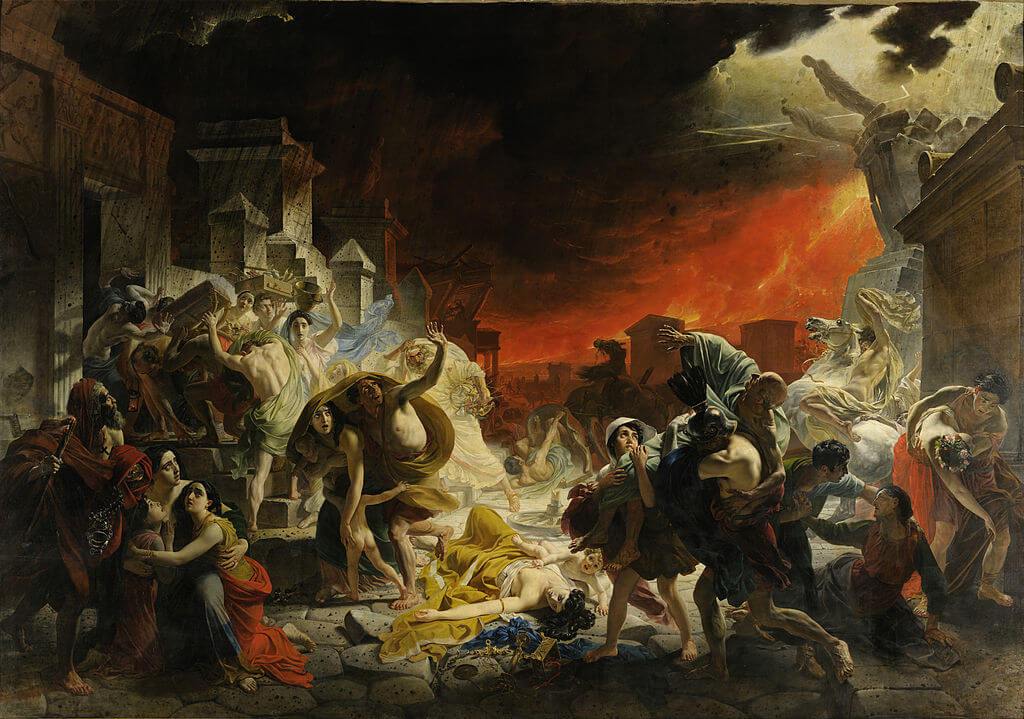
Without any exaggeration, we know about the tragedy of Pompeii primarily thanks to Carl Brullov (1799-1852). He once made a sensation both in Italy and Russia with his masterpiece. And all because he found an amazing balance between truth and fiction.
Brullov depicted a real street. And even some of the heroes are real people. The Bryullov saw their remains during the excavations. But the artist showed this disaster to be madly… beautiful. Which, of course, wasn’t in reality.
It turns out that the viewer is sympathetic to these people. But they’re not terrified of the scary details. These poor people are divinely beautiful, even at the moment before they die.
“The Last Day of Pompeii” couldn’t be surpassed in popularity among contemporaries. The artist was carried on his hands: in fact, he divided the history of Russian painting on “before and after”. Since then, since 1833, the whole world has talked about Russian art.
Translated with www.DeepL.com/Translator (free version)
2. Ivan Aivazovsky, The Ninth Wave (1850)
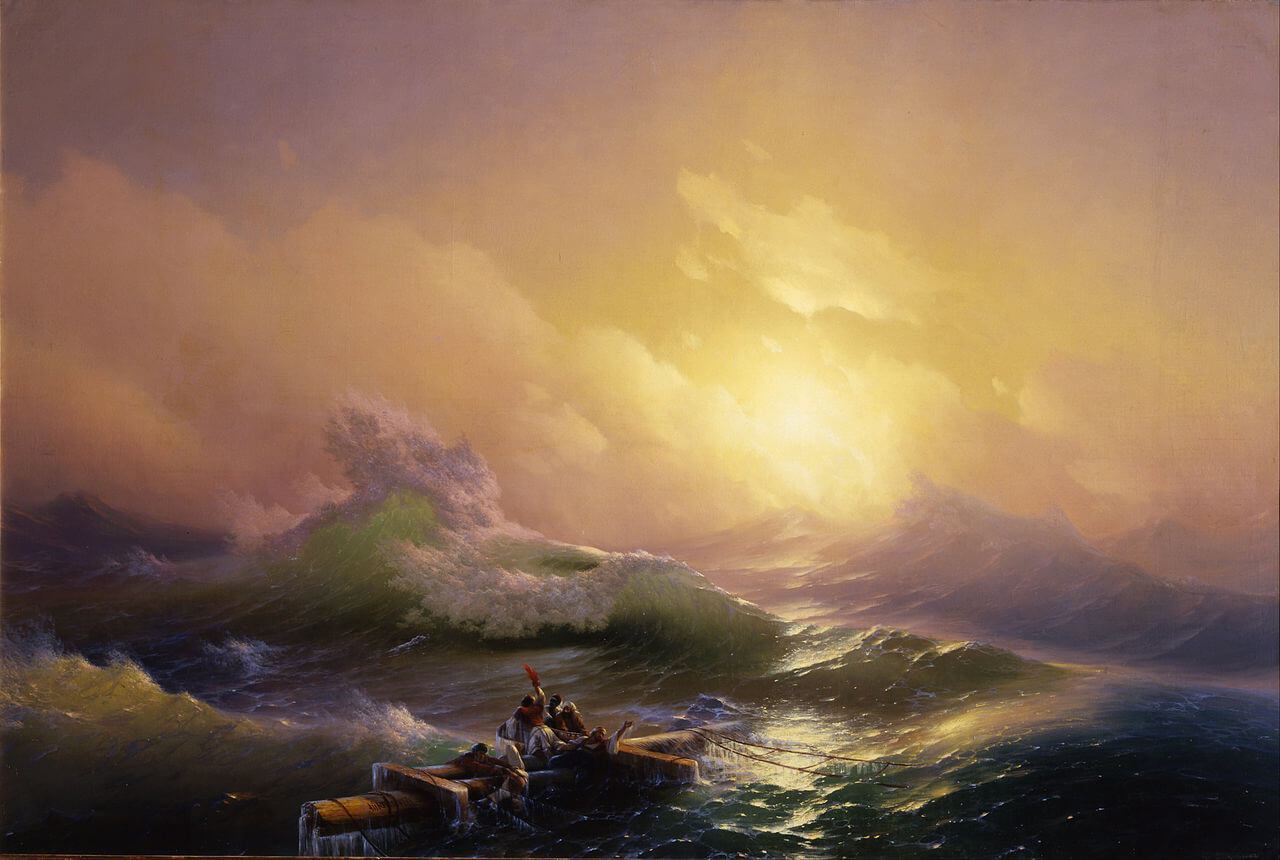
Karl Bryullov said he feels salt on his lips when he looks at Ivan Aivazovsky’s “Ninth Wall” (1817-1900). It’ s a very realistic painting. But it’s not that simple.
In the open sea, wave aprons are NOT found. The curves at the waves are formed only by the shore. So surfers on the high seas have nothing to do. Ivan Aivazovsky went to this trick to make the riot of nature more spectacular. After all, like Bryullov, he was a romantic and sang the majesty of the elements.
The Ninth Wall had every chance of being a masterpiece. Aivazovsky was the only Russian seascape painter at the time. At the same time, he worked incredibly skillfully. And he also showed the sentimental tragedy of sailors.
3. Alexander Ivanov, The Appearance of Christ to the People (The phenomenon of the Messiah). 1837
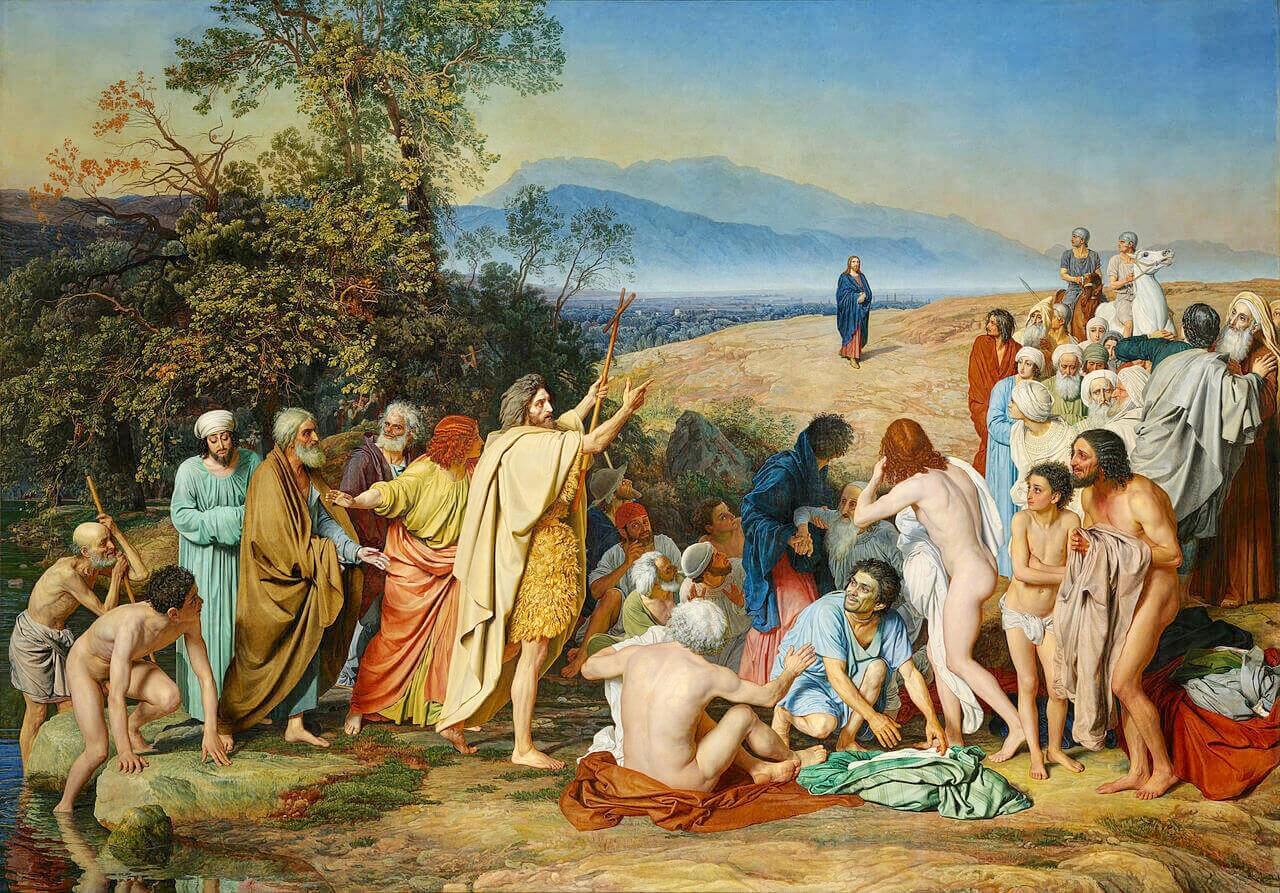
Alexander Ivanov (1806-1858) wanted to have a great success such as Bryullov with his “Pompeii” had. He took the canvas twice as big. And he worked 4 times longer (20 years against Bryullov’s five).
But something went wrong. Nobody carried Ivanov on his hands (although he was hoping for it). The triumph did not happen. The audience did not appreciate the number of 35 characters in colorful chitons. In addition, the picture is difficult to “read”: each of these characters have their own reaction to the first appearance of Christ! Someone’s excited, someone doubts that this is the “Lamb of God”.
Yes, there is no spectacular riot of the elements in the painting, like Bryullov and Aivazovsky. And there is no reason to sympathize with the tragic fate of the protagonists. And the audience got used to the special effects: they were not impressed. Well, nowadays Hollywood blockbusters are also more popular than the author’s films.
But in fact, Ivanov made a revolution in Russian painting alone. The transition from theatrical and pompous stories to the experiences of ordinary people. And Russian realists (Repin, Kramskoy, Savrasov, and others) became such as we know them, only thanks to the pictorial exploits of Ivanov.
4. Aleksey Savrasov, The Rooks Have Come Back (1871)
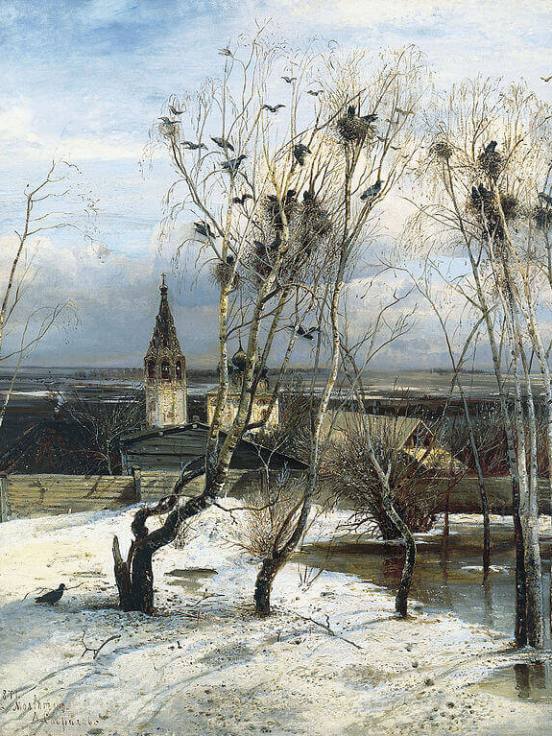
Alexey Savrasov (1830-1897), like Alexander Ivanov, made a revolution. But a more highly specialized one. In the field of landscape. It was from the work of “The Rooks Have Come Back” that the era of landscape mood began.
The painting has one paradox. On the one hand, the landscape… is boring and monochrome. And what else can you expect from the end of March, and even in a poorly cared for Russian backwoods? There’s slush and “grey” mood.
But somehow magically all this seems nice and sincere to us. The secret is in the subtle direction of the viewer to pleasant emotions. After all, the artist chose a very interesting moment: it’s still cold, but warmth is about to come. We like this feeling of rapid change for the better.
From here, pleasant sensations seem to be without reason. It’s just that we can barely catch it. Since Savrasov created his “Rooks” in 1871, almost all Russian landscapes were just such – poetic and moody.
5. Ilya Repin, Volga Boatmen (1870—1873)
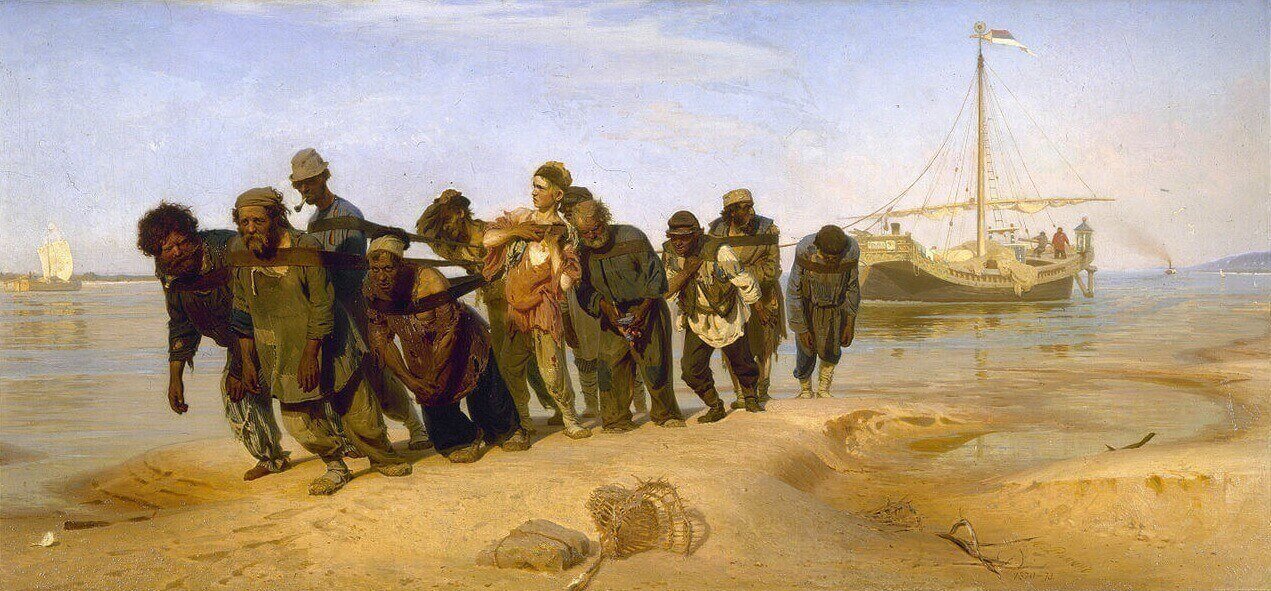
“Burlaki on the Volga” – the main masterpiece of Ilya Repin (1844-1930). Although the artist created it when he was not even 30 years old.
The painting became particularly popular in Soviet times. This plot suited the ideology of those times. Ilya Repin has learned all the lessons of Ivanov. But he brought realism to the absolute. The artist was posed by real clams. We know their names and destinies (that is, these people are lucky: they went down in history).
Their appearance is incredibly believable. This is exactly the kind of clothing that becomes from years of wearing and walking on a coastal storm. In this respect Ivanov was still a classicist: the chitons of his characters are too clean, like in a shop window. But it’s not just the severed look of the poor that makes us feel sorry for them.
6. Valentin Serov, Girl with Peaches (1887 г.)
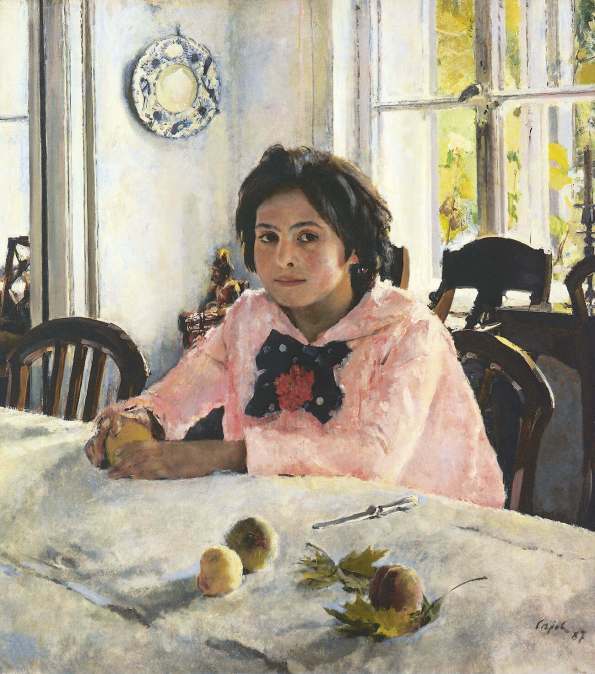
Valentin Serov (1865-1911) was even younger than Repin when he created The Girl with Peaches, his main masterpiece. He was 22 years old! It was written in the style of impressionism. And this is when in Russia almost nothing was known about this direction of painting! But Serov intuitively painted the picture with colored shadows, colorful reflexes (colored spots-reflections of some objects on the other), visible strokes.
And the plot is also in the spirit of Renoir and Monet: as if blasted in the fresh air girl ran into the room and sat down for a minute to eat a peach. Thanks to this painting impressionism “knocked” to Russian painting. And all-encompassing realism moved a little.
7. Ivan Shishkin, Morning in a Pine Forest (1889)
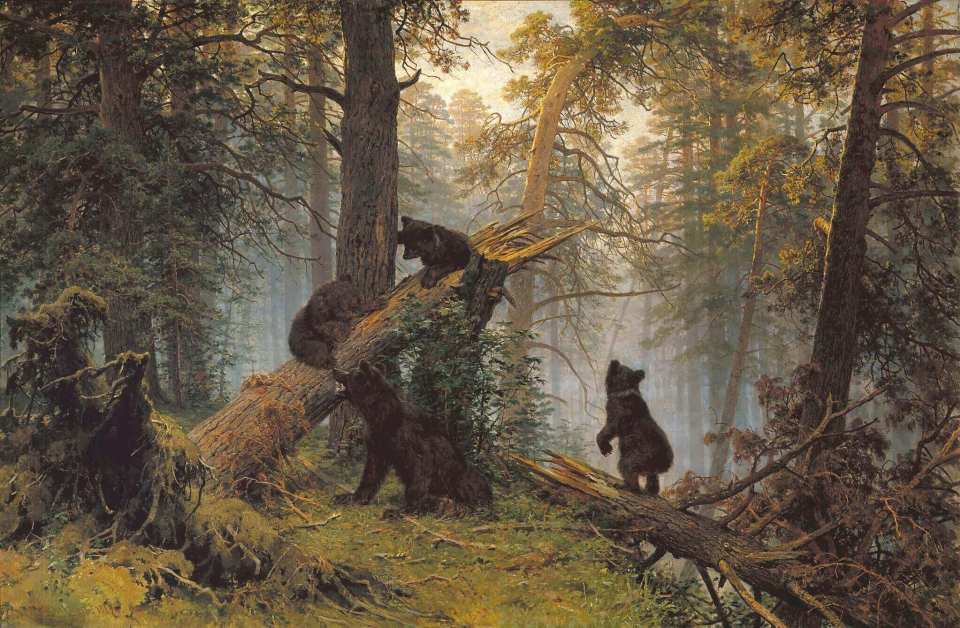
Repin destroyed his first “Burlaks”. And in that painting that we know, just in case he did not depict trees. In order not to piss off Shishkin.
Yes, Shishkin was the central figure of Russian realism. His naturalism is astounding. Standing in front of his “Bears”, you can easily feel the morning air humidity and hear the crackling of twigs. Emerald moss, gray and blue fog and ochre trunks of old pines create an incredible aura of forest thickets.
Pictures are out of control. That’s why there’s no point in saying that Shishkin realism isn’t necessary for the era of instant pictures. And the constant love of people for his “Bears” is proof of that.
























